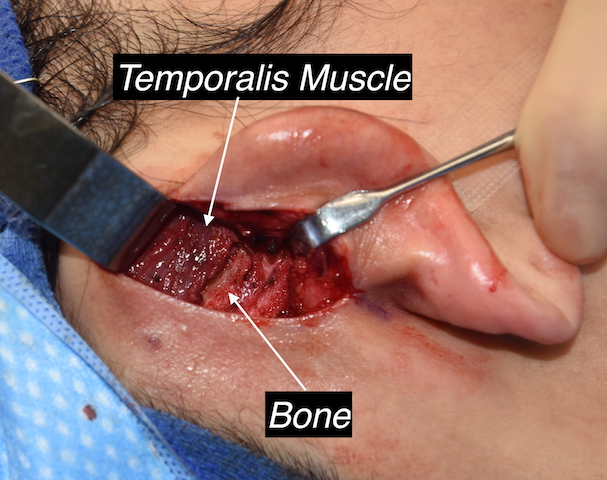One very highly successful skull reshaping procedure is that of temporal reduction. Done to reduce the width or convexity on the side of the head, it achieves its effect by removal of part or all of the posterior temporal muscle. It is performed through an incision behind the ear in the postauricular sulcus which provides near direct access to the muscle and leaves no visible scar.
The procedure is effective because of the surprising thickness of the temporalis muscle which is greatest in the posterior region at the level just above the ear. With muscle thicknesses approximating 1 cm (8 to 10mm) it is easy to see why muscle removal changes the contour of the side of the head.

Another profound effect in removal of part or all of the posterior temporal muscle is in the reduction or elimination of migraine pain. When a definitive source of the migraines can be directly located over the posterior temporal region and/or Botox injections successfully provides some relief, muscle removal has been shown in my experience to provide a more permanent source of migraine relief. It is an underappreciated type of migraine surgery that is not based on nerve decompression but actual excision of the involved muscle. And even though is a masticatory muscle there are no untoward functional effects from its removal.
Posterior temporal reduction can be done effect other than reducing the wide or overly convex side of the head. It can have a more discrete reductive contouring effect for improved fitting of eyeglasses when the fit above the ear is too tight. It can also be effective for reduction of migraine symptoms when a focus of the pain can be consistently shown to be in this muscular region.
Dr. Barry Eppley
Indianapolis, Indiana



